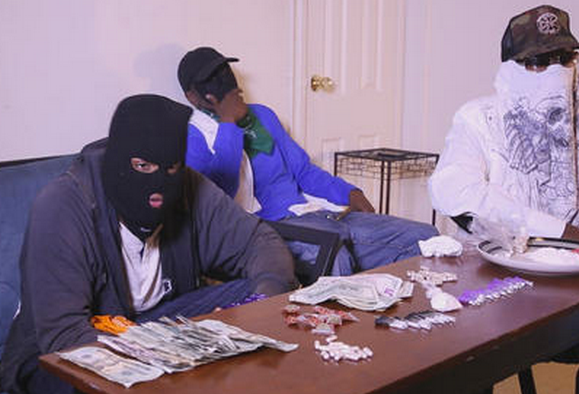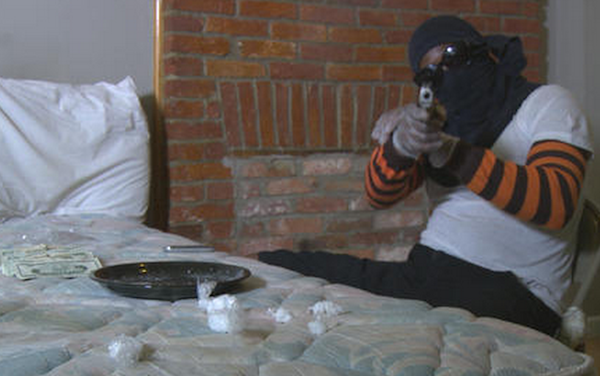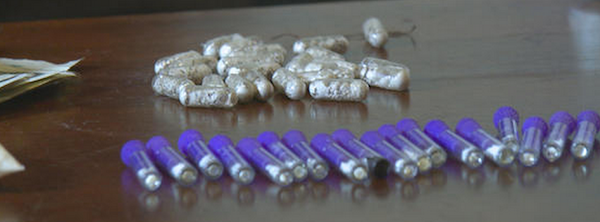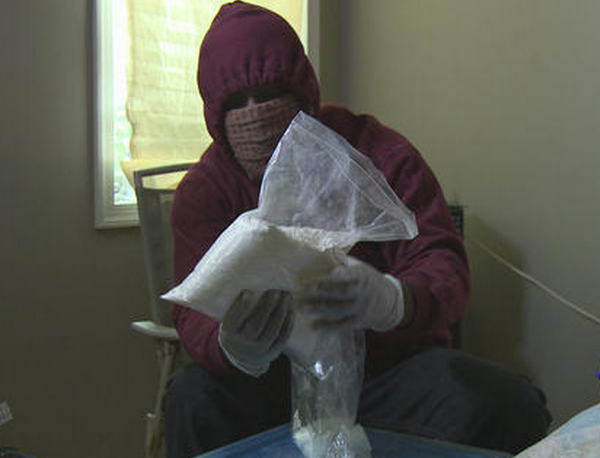Baltimore Is The "Heroin Capital of America"

Drug sales in broad daylight at Lexington Market. An addict telling viewers Baltimore "is where you want to be for heroin," and then, after she scores, letting the camera watch her cook and shoot up in her car on a street that appears to be in Hampden.
A masked drug dealer sitting at a table full of dope, pointing his gun at the camera and saying, "Coming to you live from Baltimore." An on-screen headline that says, "Baltimore is the heroin capital of America."
This is how Baltimore is depicted in the National Geographic Channel's "Drugs, Inc.: The High Wire," which premieres at 9 p.m. Wednesday. The one-hour report is sure to re-open old wounds at City Hall, if nowhere else, about Baltimore's national and international media image as a drug-infested wasteland of vacant rowhouses, lost lives and dead bodies.
Here's the opening narration, sounded over a montage of Rust Belt imagery:
"Baltimore, a tough town facing hard times. The steel mills are long gone. The docks are a shadow of what they used to be. Entire neighborhoods stand deserted. On the streets, people hustle to get by. And for many, the biggest hustle is the heroin hustle."
Echoes of HBO's drama "The Wire" are hard to miss -- as the subtitle "The High Wire" itself might suggest to some viewers.

The hour is filled with unnamed men in masks sitting behind bags full of dope and tables filled with guns, pills and money saying things like, "Life is definitely cheap in Baltimore ... somebody kill you for free."
One such person identified as an "enforcer" talks about how much he enjoys hurting and killing people -- and how little he fears the police.
There is no way for a reviewer to know how authentic these people are or aren't since they are only identified by first names and the jobs they perform in the drug trade, for example, "Wiley, crew boss."
We are asked to trust the producers that the people depicted as members of the drug world really are what they present themselves to be.
And if they are, then I would have liked to see a fuller discussion of the ethics of protecting the identities of criminals in such stories.
But the report does include fully identified members of the Drug Enforcement Administration who are working in Baltimore and members of the Harford County Sheriff's Department who are tracking "commuter dealers" who buy drugs in Baltimore and sell them in the county.

The DEA agents are the ones who take the filmmakers with them on drug buys and busts at Lexington Market.
As the cameras follow a 29-year-old woman identified only as "Lamb" driving down Pennsylvania Avenue toward Lexington Market, the narrator says: "Pennsylvania Avenue and Lexington Market stand at the heart of Baltimore's illegal drug trade."
Later, the narrator says, "Lexington Market is one of the longest running food markets in the world. But these days, the area has gained a reputation for drugs."
As I watched National Geographic's depiction of Baltimore, I was reminded of the documentary the Al Jazeera English channel did in 2012 for its "Fault Lines" series titled "Baltimore: Anatomy of an American City" with Sebastian Walker reporting.
I liked the Al Jazeera report a lot, but wondered in my review if out-of-town documentary filmmakers - often working out of Washington bureaus - come to Baltimore looking for the powerful images and compelling characters they saw in "The Wire" and seek to reproduce them through their photography and reporting.

I wondered as I watched "Drugs, Inc.: The High Wire" if I was now seeing a kind of doubling effect with the National Geographic filmmakers being influenced by both "The Wire" and the Al Jazeera report on drugs in Baltimore.
If so, the images of Baltimore as a Mid-Atlantic version of Detroit are compounding, and Mayor Stephanie Rawlings-Blake, who recently re-launched her public access TV channel as a repository of positive civic images, is fighting a truly hopeless battle. This is a media issue with huge economic and quality-of-life consequences. - David Zurawik | The Baltimore Sun

comments powered by Disqus
Home, Artists, Producers, Dimes, Store, Power Players, Mixtapes, Music Videos, Studios, Links, News, Events, DMV Radio, Clubs, Music Tips, Donate, Instagram Post, Soundcloud Repost, Email Blast, Advertising, iPhone App, Android App, Testimonials, Photography, Videography, Interviews, Get Interviewed, Submit, Services, Information









